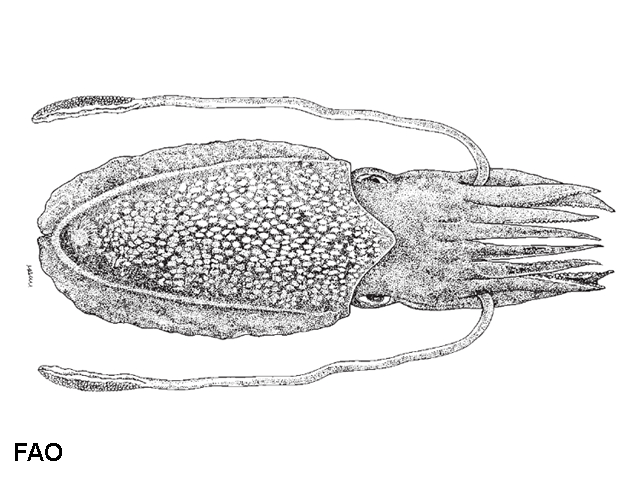| Sepiidae (cuttlefishes) |
| 20 cm ML (male/unsexed); max.weight: 0.8 g |
|
benthic; marine; depth range 0 - 50 m |
| Northwest Pacific: Japan to South Korea and China. |
|
Shell: spineless, cuttlebone width 30 to 35% of length. Mantle: broadly oval, dorsal anterior margin triangular, obtuse; pore of caudal gland at posterior tip ventral to fins. Tentacular clubs elongate, with 20 minute subequal suckers in transverse rows. Arms relatively short. Arm suckers quadriserial; left arm IV hectocotylized in proximal third with the basal part modified by great reduction in size of suckers placed on a transversely ridged surface; ventral 2 rows of suckers close together, dorsal 2 rows separated. Colour: greyish brown. Dorsal mantle covered with white blotches or spots. Fins with pale reflective line along base. No spots or wine-coloured patches at base of fins. |
| It is a coastal demersal species, with depth up to about 50 m. Dominant cuttlefish caught around the Chekiang and Kiangsu, China. It is also important in the fisheries of Japan, South Korea and Taiwan, caught in large numbers in bottom trawls. In Japan, most of the catch is dried and marketed as ‘surume’ (Ref. 275). |
|
Data deficient (DD); Date assessed: 19 March 2009 Ref. 123251)
|
|
|
Source and more info: www.sealifebase.org. For personal, classroom, and other internal use only. Not for publication.

